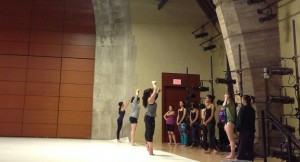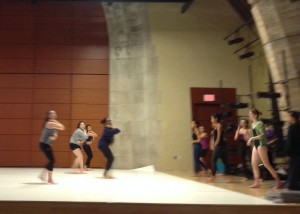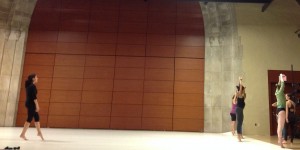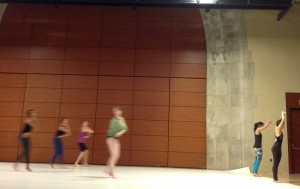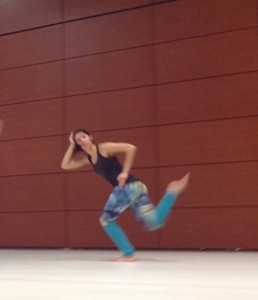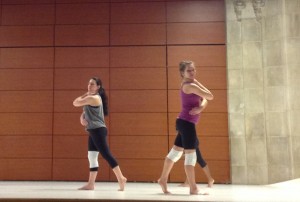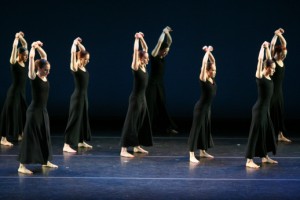This past weekend was the first and longest of the three weekends that Jennifer Conley will spend with us at Bryn Mawr, teaching choreography and setting staging. She will return for dress and technical rehearsals just before the April performances.
After the three hours spent in the studio on Friday evening – the goal of which, post-introductions, was to stage the first and second sections of the piece – the dancers returned at 10 am on Saturday morning and rehearsed for six hours on both Saturday and Sunday.
Steps in the Street is only about six minutes long, but every moment of this dance is an athletic feat requiring great amounts of strength and control. There are these jumps, for instance, that reoccur throughout the piece that I have tried to practice myself. I cannot make one decent looking jump. In Steps these jumps are done in rapid, rhythmic succession, sometimes for many counts at a time. I had to leave during rehearsal, in Pembroke Studio, on Saturday and as I walked outside, underneath Pembroke Arch, I could still hear the pounding of twenty-two feet landing over and over and over again.

Heather McGinley, Sevin Ceviker, Mariya Dashkina Maddux, Jacqueline Bulnes, and Carrie Ellmore-Tallitsch of the Graham Company in Martha Graham’s “Sketches from ‘Chronicle'”
(Photo by Costas / Copyright Costas)
In her autobiography, Blood Memory, Martha Graham wrote:
Before I began to dance I trained myself to do four hundred jumps in five minutes by the clock.
The six minutes of Steps are made up of a series of entrances and exits, so Jennifer is for the most part teaching the choreography and setting the staging simultaneously. Though the dance requires great physical strength this is not immediately apparent to the viewer – there are no show-off-y tricks – rather the power of this work is derived from sustained rhythms and repetition within the choreography and the complex patterns created by the entrances and exits of the dancers en masse.
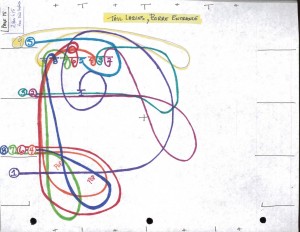
Jennifer’s color-coded map shows part of the staging for one particularly complex entrance
By the end of the day on Sunday everyone was, understandably, wiped out. Knee pads were being worn on a number of different joints and I noticed some winces and limps I hadn’t before. I had left in the middle of the day and returned for the final hour of rehearsal. The dancers were preparing to do a full run-through of all but the final section of the dance with the music.
Jennifer had been encouraging the dancers to “tap into the spirit” of the dance – like the act of “intermingling” I referenced here – this means sharing something with those who have danced these steps before you while at the same time bringing your own spirit to the work in order to keep it alive. I’m not exaggerating when I say this is what I felt happen during that run-through on Sunday afternoon. It was as though the psychic space Jennifer had been preparing the dancers for since Friday had just been conjured. The air in the studio seemed to vibrate with some greater shared energy – like something had just clicked into place – a unity and a new found familiarity between the dancers, the history and the work. It was a little spooky and very beautiful.

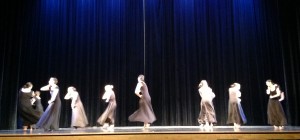
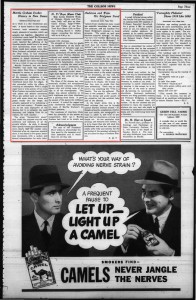
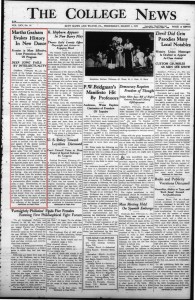
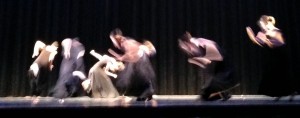
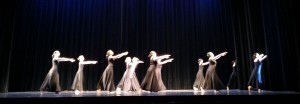

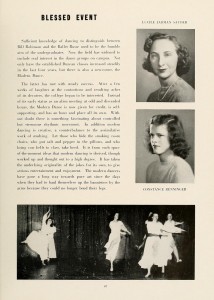
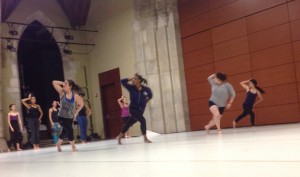
![The dancers rehearse the "zombie walk" while Jennifer [far right] uses Joie to demonstrate the sensation of opposing forces this movement should conjure. Here, the dancers are pushing forward through air thick with remembered sorrows.](http://mawrsteps.blogs.brynmawr.edu/files/2014/03/jen-push-joie-300x224.jpg)
